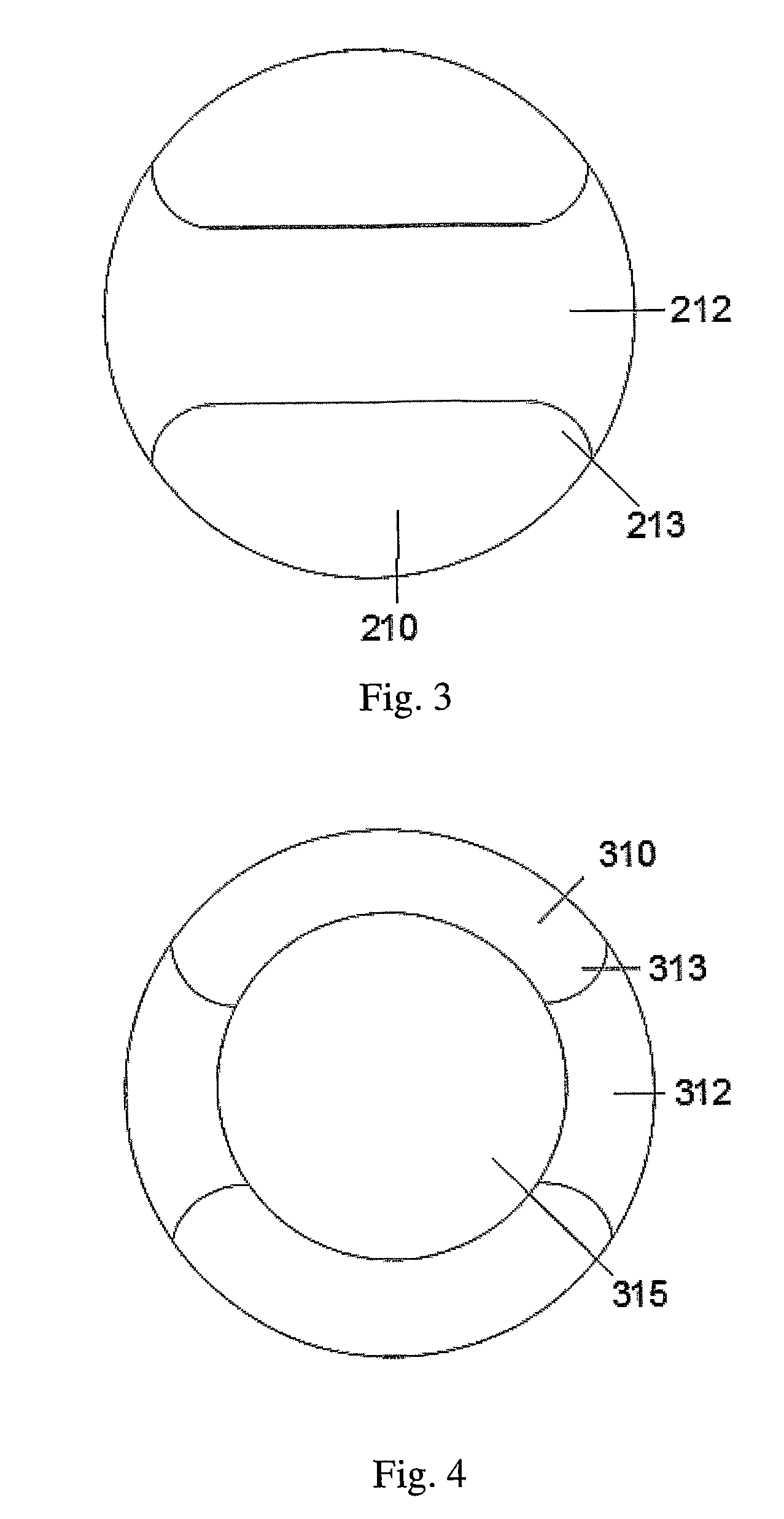Particles
a technology of particles and coil tubing, which is applied in the field of manufactured particles, can solve the problems of affecting the flow, affecting the effect of treatment, etc., and achieves the effects of increasing the capacity, increasing the production, and constant wall thickness
- Summary
- Abstract
- Description
- Claims
- Application Information
AI Technical Summary
Benefits of technology
Problems solved by technology
Method used
Image
Examples
second embodiment
[0092]a particle 100 is shown in FIG. 2. The particle in FIG. 2 is the same as the particle in FIG. 1 except that it includes further ports 114, 116 which are at right angles to a first port 112.
first embodiment
[0093]The flow rate through a gravel pack comprising particles such as particle 100 is even higher than that of the invention.
third embodiment
[0094]a particle 210 is shown in FIG. 3. The particle is similar to that of FIG. 1, but it has a radiused edge 213 where the port 212 meets the surface outer surface of the particle 210.
PUM
| Property | Measurement | Unit |
|---|---|---|
| specific gravity | aaaaa | aaaaa |
| thickness | aaaaa | aaaaa |
| diameter | aaaaa | aaaaa |
Abstract
Description
Claims
Application Information
 Login to View More
Login to View More - R&D
- Intellectual Property
- Life Sciences
- Materials
- Tech Scout
- Unparalleled Data Quality
- Higher Quality Content
- 60% Fewer Hallucinations
Browse by: Latest US Patents, China's latest patents, Technical Efficacy Thesaurus, Application Domain, Technology Topic, Popular Technical Reports.
© 2025 PatSnap. All rights reserved.Legal|Privacy policy|Modern Slavery Act Transparency Statement|Sitemap|About US| Contact US: help@patsnap.com



